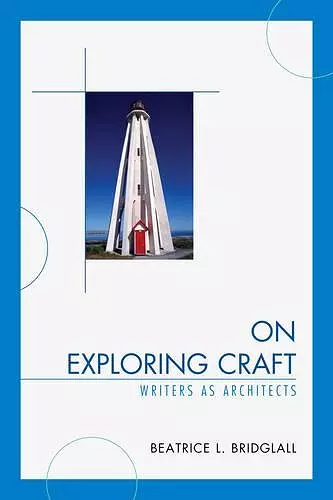On Exploring Craft
Writers as Architects
Format:Hardback
Publisher:University Press of America
Published:7th Nov '15
Currently unavailable, and unfortunately no date known when it will be back

The process of probing beneath and even shaving or sanding away the language undergirding literary works that, word by word, line by line and page by page, sustains a narrative’s arc, contributes to the perspective of writer as architect. For it not only positions, but also reinforces the significance of line, mass, texture, balance, scale and proportion in a new world, a created structure and the spaces that organize it, that if expertly executed, endures over time.
At a time in which a heated debate rages over whether education should be vocational or liberal, this book makes a much needed contribution. It applies the tenets of architecture to illuminate great works of literature, demonstrating that the useful arts and liberal tradition are inextricably intertwined. -- Arthur Levine, PhD, President, Woodrow Wilson National Fellowship Foundation
The exploration of parallel concepts that both architects and writers utilize in their respective work, is no easy task. Even more impressive however, is Dr. Bridglall’s astute investigation of worlds imagined yet enduring; philosophical, poetic and fictional worlds in which ideas of identity, truth, nature, beauty and belonging collide and unfold in chaos, conflict, and occasionally, enlightenment. Worlds in which we can train our lenses on characters, sometimes very much like ourselves, and observe as they struggle to understand and bring human shape to their world. This book reinforces the power of literature, particularly for our students, as they navigate their way in an increasingly complex and diverse world. -- Michael Nettles, PhD, Senior Vice President, Educational Testing Service’s Policy, Evaluation & Research Center
The opportunity to ‘work through’ the chapters in this volume has been a fantastic exercise in understanding and constructing the analytical lenses through which Dr. Bridglall perceives and describes the literary works chosen for inclusion. She maps out an intriguing way of working with the texts for reading, reflection, analysis, and synthesis, and explains her approach so well that readers can approach the works along with her as she works through their applied interpretive meaning. Dr. Bridglall’s framework brings together a unique way of examining literature that for many post-secondary level readers would be far more accessible than the ‘reader response’, ‘literary devices’, or ‘critical analysis’ approaches that often dominate such readings and discussions. For more advanced readers, it provides a novel and challenging way to examine and reflect on literary works. It crosses the spectrum. I enjoyed her rendering of what I’d consider to be one of the more complex interpretive levels in relation to the line, “I’ve loved living with little.” The work also calls on readers to read past the literary works themselves to bring actual knowledge and understanding of writers’ lives to literary renderings. -- Elizabeth Sloat, PhD, University of New Brunswick, Canada
ISBN: 9780761866749
Dimensions: unknown
Weight: unknown
116 pages